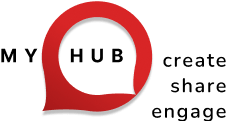In today’s competitive business world, organizations often overlook a valuable resource sitting right under their noses—employee ideas. Whether it’s a more efficient process, a new product concept, or a creative solution to an ongoing challenge, employees can be a goldmine of innovation. However, many organizations unknowingly lose these ideas due to a lack of transparency in communication. The true cost of hidden employee ideas goes beyond missed opportunities; it impacts employee morale, engagement, and even retention.
This article will explore the root cause of this issue and introduce transparent communication as a powerful solution to unlock untapped creativity and innovation.
1. Understanding Why Employees Keep Quiet
Despite the potential value in employees’ ideas, many choose to keep them to themselves. There are several reasons for this, ranging from psychological barriers to structural flaws within the organization:
- Fear of Rejection or Negative Criticism: Employees may fear their ideas will be dismissed or ridiculed, which discourages them from speaking up. The anxiety around negative feedback often leads to hesitation in sharing innovative thoughts.
- Lack of Recognition or Reward for Contributing Ideas: When employees don’t feel acknowledged or rewarded for their contributions, they’re less likely to engage. Without recognition, the effort feels futile, and the motivation to share new ideas diminishes.
- Ambiguity in the Idea Submission and Feedback Processes: Many organizations still rely on outdated methods like suggestion boxes or one-off brainstorming sessions. However, these systems are often unclear about what happens next. Employees are left wondering if their ideas are ever evaluated, let alone implemented.
These issues stem not only from individual reluctance but from deeper organizational flaws in how ideas are gathered, assessed, and acted upon. Traditional methods, such as suggestion boxes or one-off brainstorming sessions, fail to provide a clear and structured process for employees to contribute and see their ideas implemented.
Additionally, these systems often overlook psychological barriers like fear of rejection, lack of recognition, and unclear feedback, which discourage employees from sharing their thoughts. Without transparent and supportive processes, employees may feel their ideas are undervalued, leading to disengagement and missed opportunities for innovation.
2. Introducing Transparent Communication as a Solution
Transparent communication means that employees are given a clear understanding of how their ideas are handled and that they feel confident their voices are heard. Dave Fano, CEO of Teal Labs Inc., firmly advocates this, saying, “At Teal, we believe that transparency is key to unlocking true innovation. When employees feel heard and know that their ideas will be valued, they become more engaged, motivated, and empowered to contribute to the organization’s success no matter what department within the business they are in.”
Transparent communication is not just about collecting ideas; it’s about creating an open environment where feedback and decision-making are shared across all levels. Here’s how transparency can make a difference in the workplace:
- Transparency in Leadership: When leaders are open about company goals, progress, and even mistakes, it fosters a culture of trust. Employees can see the bigger picture and feel like they’re part of the decision-making process.
- Transparency in Decision-Making: Rather than leaving employees in the dark about how ideas are assessed, organizations should provide clear criteria for evaluating and adopting ideas. This clarity reduces uncertainty and builds confidence in the process.
- Transparent Feedback Culture: Establishing regular, visible feedback discussions helps employees understand why an idea was accepted or rejected. Constructive feedback encourages future participation and supports an ongoing dialogue around innovation.
When transparency becomes part of an organization’s core values, employees feel empowered to share their ideas without fear of dismissal or misunderstanding.
3. How Intranet Platforms Enable Transparent Communication
Intranet platforms provide the perfect infrastructure for transparent communication by offering a centralized, digital space for information sharing, discussions, and feedback. Here’s how they enhance transparency:
- Visible Progress Tracking for Employee-Submitted Ideas: Intranet platforms can include features like dashboards or project management tools that allow employees to track the progress of their submitted ideas. This makes it easy to see which ideas are being reviewed, approved, or in development.
- Open Discussion Forums Accessible to All Employees: Hosting open forums or idea-sharing boards on an intranet platform encourages participation across the organization. These forums allow employees to openly discuss ideas, suggest improvements, and collaborate, fostering a more inclusive environment for innovation.
- Centralized Spaces for Feedback and Updates: Intranet platforms allow for feedback loops to be created, where employees receive regular updates on their submitted ideas. This ensures that feedback is visible to everyone and employees feel heard and appreciated.
By providing a transparent space for employees to engage, intranet platforms break down communication barriers, making it easier for organizations to tap into the full potential of their workforce.
4. Practical Steps for Organizations to Promote Transparency
For transparency to truly take root, organizations must take proactive steps to embed it into their culture. Implementing transparent communication practices can significantly enhance employee engagement. For instance, a study in Austria found that employees’ perception of their organization’s transparency directly influenced their job engagement.
Research indicates that organizations with high levels of transparency tend to experience higher employee satisfaction and retention rates. Here are some actionable strategies to promote transparency and reduce idea hoarding:
- Host “Open Decision” Sessions: These sessions allow employees to learn about the decision-making process behind important choices. Leaders can explain how ideas are evaluated, which gives employees a clearer understanding of the impact of their contributions.
- Publicly Showcase Employee Contributions: Use the intranet platform to highlight the ideas that employees have submitted, especially when those ideas lead to tangible results. Public recognition increases motivation and reinforces the importance of contribution.
- Clarify Idea Submission and Follow-Up Processes: Remove any ambiguity by providing clear guidelines for how employees can submit ideas, who will evaluate them, and what the next steps are. This helps employees understand what to expect and reduces the uncertainty that often leads to disengagement.
By adopting these strategies, organizations can create an environment where employees feel safe, valued, and motivated to contribute their best ideas.
5. Leveraging Technology for Clearer Communication and Employee Profiles
In addition to fostering transparency in communication and decision-making, organizations can benefit from using technology to enhance clarity around employee contributions, skills, and career growth. This not only aids in the idea submission and feedback process but also in building more transparent career pathways for employees.
AI Tools for Employee Development
By using AI-powered tools like the AI Cover Letter Generator, organizations can help employees create tailored and up-to-date cover letters, emphasizing their skills, experiences, and ideas. This can help both employees and managers maintain clear communication about career progression, role fit, and contributions to innovation within the company.
For example, an AI Cover Letter Generator can assist employees in drafting cover letters that highlight their specific skills and contributions, making it easier for leadership to recognize individuals who are driving innovation and growth.
6. Real-Life Examples of Organizations that Reduced Idea Hoarding through Transparency
Several organizations have successfully implemented transparent communication to encourage more open idea sharing, leading to greater innovation and employee engagement. Buffer, a social media management company, stands out for its commitment to transparency in decision-making and operations. By openly sharing company metrics, financials, and even hiring decisions, Buffer has cultivated a culture where employees feel empowered to speak up and contribute ideas without fear of rejection. This openness not only fosters trust but also encourages a more inclusive and collaborative work environment.
Similarly, Atlassian, a leader in software development tools, has adopted an open and visible recognition system. By publicly acknowledging employees’ ideas and contributions, Atlassian has created a culture that values innovation. This recognition has significantly boosted employee engagement and satisfaction, demonstrating the powerful impact of transparency on organizational success.
These examples highlight how fostering an environment of openness and recognition can reduce idea hoarding, increase innovation, and improve overall employee morale!
7. Measuring Your Progress
Once transparency is established, it’s crucial for organizations to measure their progress. Here are some key metrics to track:
- Employee Engagement and Satisfaction Scores: Regularly assess how engaged and satisfied employees are with the transparency initiatives. Surveys and feedback mechanisms can provide valuable insights.
- Volume of Employee Ideas Submitted and Implemented: Track the number of ideas employees submit, as well as the percentage that are successfully implemented. This helps gauge the effectiveness of the transparency initiatives.
- Employee Retention Rates and Internal Promotion Metrics: Transparent communication contributes to a positive work environment, which often leads to lower turnover rates and higher internal promotion metrics. Tracking these can show the long-term benefits of building a transparent culture.
Stop Losing Great Ideas – Start Building Transparency
The cost of hidden ideas is high — organizations miss out on untapped creativity and innovation. Transparent communication is the most effective solution to break down the barriers to idea sharing. By fostering a culture of openness and providing the right tools, such as intranet platforms, organizations can unlock the potential of their workforce and create an environment where employees feel empowered to contribute.
It’s time to stop losing great ideas. Start building transparency today, and watch your organization thrive with increased innovation, engagement, and success.








